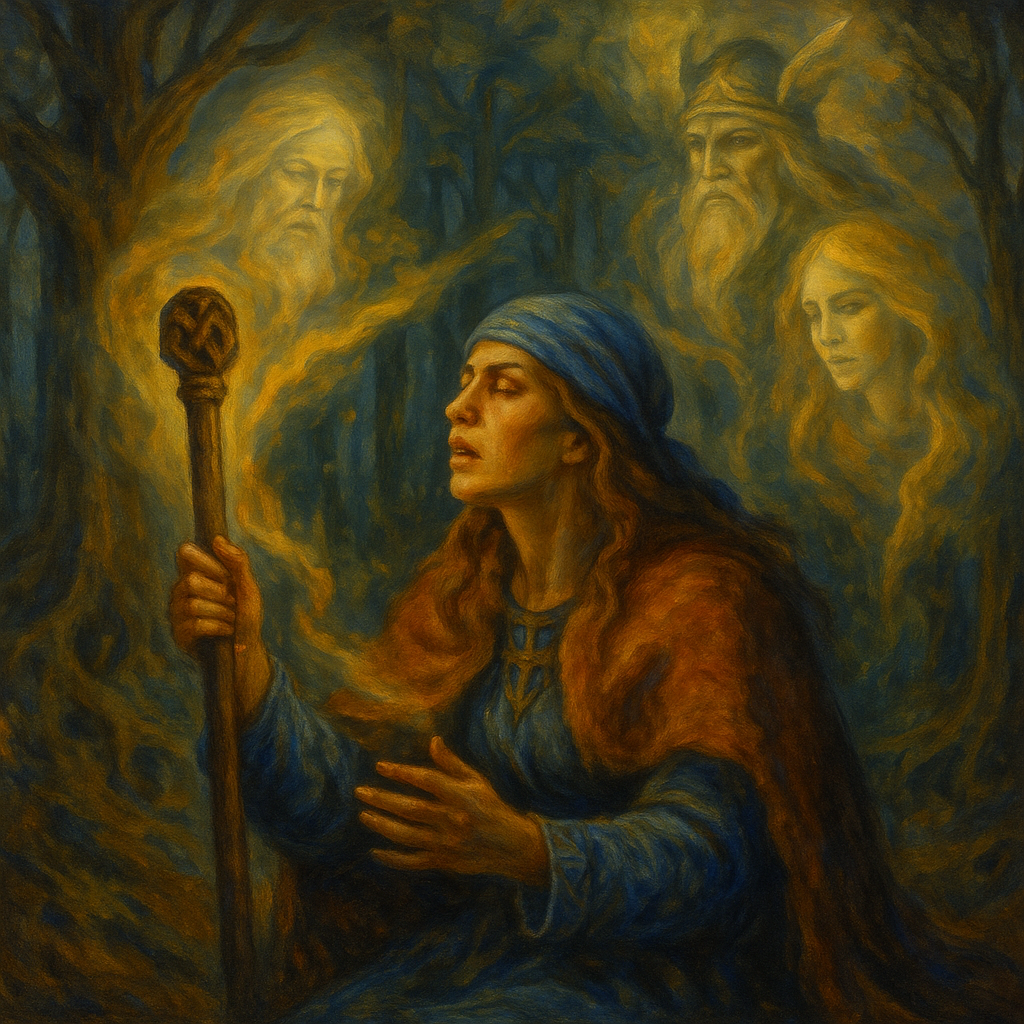Germanic and Norse Beliefs: Spirit Communication, Mediumship, and Spiritual Dimensions
Introduction
Before the spread of Christianity across Northern Europe, the Germanic and Norse peoples developed spiritual systems deeply rooted in ancestor veneration, fate, and communication with unseen realms. Through seers, shamans, and ritual practices, they maintained constant dialogue with gods, spirits, and the dead. Unlike the later Christian worldview, their cosmology was multidimensional, with humans embedded in a web of divine forces, ancestral presence, and natural powers.
Cosmology: The Germanic and Norse Worlds
Germanic and Norse spirituality described the universe as a multilayered system of realms within the great world-tree, Yggdrasil.
Midgard (Middle World): The human realm.
Asgard & Vanaheim: Realms of the gods (Aesir and Vanir).
Hel & Niflheim: Realms of the dead and underworld forces.
Jotunheim: Land of giants, often adversaries but also sources of wisdom.
Alfheim & Svartalfheim: Realms of light and dark elves, spiritual beings who influenced humans.
This cosmology meant that spirit communication was woven into the fabric of existence, with gods, ancestors, and spirits ever-present.
Ancestors and the Dead
1. Ancestor Veneration
Burial mounds (haugr) were seen as sites of ongoing communication, where offerings were left for the dead.
Ancestors provided protection and guidance, but neglected spirits could become restless and dangerous.
2. The Draugr and Restless Dead
The Norse feared the draugr, spirits of the unquiet dead who could rise and trouble the living.
Rituals and protective magic ensured the peaceful passage of souls into Hel’s realm.
3. Disir and Female Ancestral Spirits
The disir were protective female ancestors or spirits associated with fertility and fate.
They were honored in the Dísablót, a seasonal sacrifice for ancestral blessings.
Mediumship and Spiritual Specialists
1. Völur (Seeresses)
Women known as völur practiced seiðr, a form of trance magic and prophecy.
Through chanting, ritual staffs, and sometimes ritual intoxication, they entered altered states to channel messages from gods and spirits.
2. Seiðr and Spirit Journeys
Seiðr involved spirit travel into other realms, contacting gods, elves, and the dead.
It was often associated with the goddess Freyja, who taught seiðr to the gods and humans.
3. Germanic Priests and Wise Men
Among early Germanic tribes, priestly figures conducted sacrifices (blót) and divination rituals, serving as mediators with gods and spirits.
Sacred groves and springs were used as oracular sites.
Methods of Spirit Communication
Trance and Possession: Seeresses allowed spirits to speak through them in ritual contexts.
Divination (Spá): Reading omens, lots, or runes to interpret the will of the gods.
Dreams: Dreams were gateways for gods, ancestors, and spirits to send visions.
Sacrifice and Offerings: Food, weapons, and animals were given to gods and ancestors to maintain harmony.
Sacred Sites: Groves, mounds, and wells (like Mímir’s Well) were portals to other dimensions.
Spiritual Beings and Dimensions of Contact
Gods (Aesir and Vanir): Odin, Freyja, Thor, and others communicated through dreams, omens, and seers.
Norns: Beings of fate who wove destinies, sometimes contacted in visions.
Elves and Land Spirits (Landvættir): Guardians of places, requiring offerings and respect.
Giants (Jötnar): Forces of chaos and wisdom, contacted in vision quests.
Hel and Underworld Beings: Spirits of the dead guided or troubled the living.
Comparisons with Western Mediumship
Similarities: Trance mediumship, dream messages, ancestor veneration, and oracular prophecy.
Differences: Germanic and Norse traditions were tribal, fate-oriented, and cosmological, with spirit communication tied to destiny, warfare, and fertility rather than individual proof of the afterlife.
Continuity and Legacy
Despite Christianization, many elements survived in folklore:
Belief in elves, land spirits, and the restless dead persisted into modern European traditions.
Runic divination and dream interpretation remained folk practices.
Modern pagan revivals (Ásatrú, Heathenry) reconstruct seiðr, ancestor rituals, and offerings to spirits.
Conclusion
Germanic and Norse pre-Christian beliefs in spirit communication, mediumship, and spiritual dimensions reveal a culture where gods, ancestors, and spirits actively shaped fate and community life. Through seiðr trance, ancestor veneration, rune divination, and rituals at sacred sites, humans sustained vital dialogue with the unseen.
Unlike Western Spiritualism, Germanic traditions emphasized fate, cosmic cycles, and communal survival, embedding spirit communication into warfare, kingship, and the natural order.

